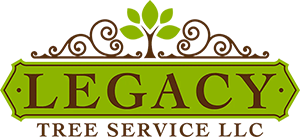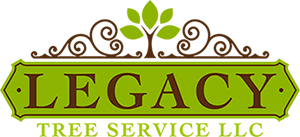5 Signs that Your Tree May Have a Disease

Trees are vital components of our ecosystem, contributing to the air we breathe, the landscapes we find beautiful, and the habitats for countless creatures. However, trees are susceptible to diseases that can threaten their health and longevity. And when a tree falls into poor health, it can become more prone to toppling over in high winds, creating a serious safety hazard to people and property. At Legacy Tree Service, we can accurately identify diseased trees and then determine whether they can potentially be saved or if they should be safely removed. Here’s a look at five signs that a tree is diseased.
Abnormal Leaf Discoloration or Growth
One of the most apparent signs of a diseased tree is abnormal leaf discoloration or growth. Keep an eye out for leaves that are discolored, spotted, or have unusual patterns. Discoloration can range from yellowing or browning to black spots or powdery mildew. Similarly, if you notice stunted or unusually small leaves, it could be a sign of an underlying issue. While some leaf changes can be attributed to seasonal variations, persistent abnormalities may indicate a deeper problem.
Cracked/Peeling Bark
The bark serves as a protective layer for the tree, and changes in its appearance can signal disease. Look for cracks, cankers, or lesions on the bark's surface, as these may be entry points for pathogens. Also, peeling or missing bark in localized areas can indicate damage or disease. Healthy bark should be intact and free from significant blemishes.
Unusual Growth Patterns
Healthy trees typically exhibit balanced and symmetrical growth patterns. However, diseased trees may display irregular growth, such as excessive branching or thinning of foliage from the tips inward. There’s cause for concern if you notice any deviations from the tree's natural shape and structure.
Presence of Pests or Fungi
Pests and fungi are often associated with tree diseases, as they can weaken the tree's defenses and facilitate the spread of pathogens. Keep an eye out for signs of infestation, such as insect activity or fungal growth on the tree's surface. Certain fungi may produce visible fruiting bodies, such as mushrooms or conks, indicating decay within the tree.
Decline in Overall Health
Perhaps the most telling sign of a diseased tree is a decline in its overall health. This can manifest as a combination of the aforementioned symptoms. If you notice multiple indications of poor health, it's important to take action promptly to address the underlying cause.
Tree Care in Santa Rosa, CA
When you need an arborist in Santa Rosa and the surrounding area, contact Legacy Tree Service at
707-239-2612. Feel free to give us a call today to request an arborist estimate in Santa Rosa!


